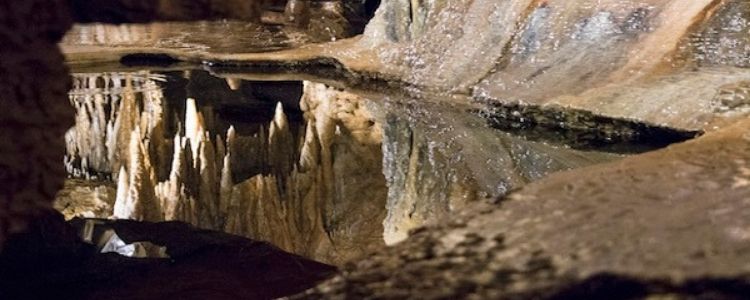Springtails have several distinguishing features, but the coolest might be the tail that gives them their name. The forked tail, called a “furcula,” normally lies curled under the springtail’s body. When a springtail flicks its furcula, it flies into the air at extreme speed, flipping end over end like a freestyle skier or snowboarder. The distance traveled can be well over ten times the springtail’s body length!
In 1958 it was determined that the springtails found at Cave of the Mounds belong to the species Coecobrya tenebricosa. This species has been found in a variety of environments worldwide, including caves, but also in soil environments and even human structures such as greenhouses. It is not certain whether those at Cave of the Mounds were native to the cave or introduced after its discovery.

